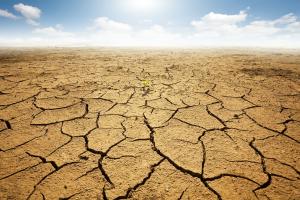- Welcome
- About Life
- National Geographic and Life
- Teacher Resources
- Customizing Life to your course hours
- Interactive Whiteboard Video Tutorial
- Student's Book and Workbook Audio
- CEFR correlations
- Audioscripts (Word)
- Reading Texts (Word)
- Videoscripts (Word)
- Business Writing Worksheets
- Communicative Worksheets
- Extra Practice Activities
- Life Grammar Practice Worksheets
- Multilingual and monolingual word lists
- Ready-made Lessons
- Split editions teacher's book references
- Student's Book Answer Keys
- Web research for Life
- Video
- Test Centre
- Student Zone
The Story of the Aral Sea

In 2009 in Kazakhstan, a group of fishermen met on a Sunday afternoon. They were on the beach of the North Aral Sea. They ate food. They did some sports. Afterwards, they told stories and sang songs about the Aral Sea and fishing. It was a good party.
The fishermen were happy because there were fish in the water. For many years, there weren’t many fish. At one time, the Aral Sea in Central Asia was the fourth largest lake in the world. It had an area of 67,300 square kilometres. Two of the biggest rivers in Central Asia, the Amu Darya and the Syr Darya, went into the Aral Sea. But the water almost disappeared.
The Aral Sea was a busy place. Almost 20 percent of the Soviet Union’s fish came from here. 40,000 people lived and worked near the lake. Then people used the water in the two rivers for agriculture, so the water didn’t arrive at the Aral Sea. Also, it didn’t rain for many years.
Then, in 2005, the Kazakh government and the World Bank built a dam. The dam separated the north and south parts of the sea. Then the north part of the Aral Sea started to fill with water again.
Philip Micklin is a scientist. He studies the Aral Sea. In 2010 he said ‘Nature can come back.’ But in 2014, he saw satellite pictures of the east part of the Aral Sea. It was completely dry.
In June 2015 a scientist from Uzbekistan, Yusup Kamalov, and a National Geographic reporter visited the Aral Sea. They found a huge desert. They stood on the sand. Once it was the edge of the water. Now the water is 80 kilometres away. They drove to the water. On the way, they passed oil and natural gas rigs. Kamalov said that every year there are more oil rigs. They arrived at the edge of the Aral Sea. The water was very salty. There were no fish. Kamalov said, ‘This is what the end of the world looks like’.
glossary
fishermen (n) men whose job is to catch fish
dam (n) a wall to stop water flowing
rig (n) a structure for getting oil or gas out of the ground
Keywords:
beach
(n) land with sand or stones that is next to the sea
desert
(n) a large area of land where there is little rain and not many plants grow
east
(n) the direction from which the sun rises in the morning; opposite to west.
lake
(n) a large area of water with land all around it
north
(n) the direction on the left when you look at the sunrise; opposite to south
rain
(v) when water falls from the sky in drops, it rains
river
(n) water that travels along a natural channel across the land to the sea
sand
(n) the substance usually found on beaches and in deserts that is made of very small pieces of rock
sea
(n) the salty water that covers about three-quarters of the Earth's surface
south
(n) the direction on the right when you look at the sunrise; opposite the north.
Reading comprehension:
Read the article and choose the correct option.
in Central Asia
in Kazakhstan
in Uzbekistan
2. What is the problem in the Aral Sea?
It’s full of oil.
It’s getting bigger.
It’s getting smaller.
Read the article again and choose the correct option.
Kazakh fishermen are good at sport.
Kazakhstan is next to the North Aral Sea.
The fishermen met every Sunday.
4. Why did the fishermen meet?
because it was Sunday
to go fishing
to have a party
5. Which word describes the fishermen in 2009?
pleased
rich
sad
6. According to paragraph 2, which sentence is true?
The Amu Darya and Syr Darya are the biggest rivers in the world.
The Aral Sea is one of the biggest lakes in the world.
The biggest lake in the world is bigger than 67,300 square kilometres.
7. According to paragraph 3, which sentence is true?
Nobody knows why the Aral Sea got smaller.
There are two reasons why the Aral Sea got smaller.
There’s one reason why the Aral Sea got smaller.
8. What happened because of the dam?
The water in the Aral Sea disappeared.
There was more water in the North Aral Sea.
There was more water in the South Aral Sea.
9. How did Yusup Kamalov and the reporter travel to the Aral Sea?
by boat
by car
on foot
10. Why were there no fish in the sea?
because of the oil rigs
because of the salt
because of the sand